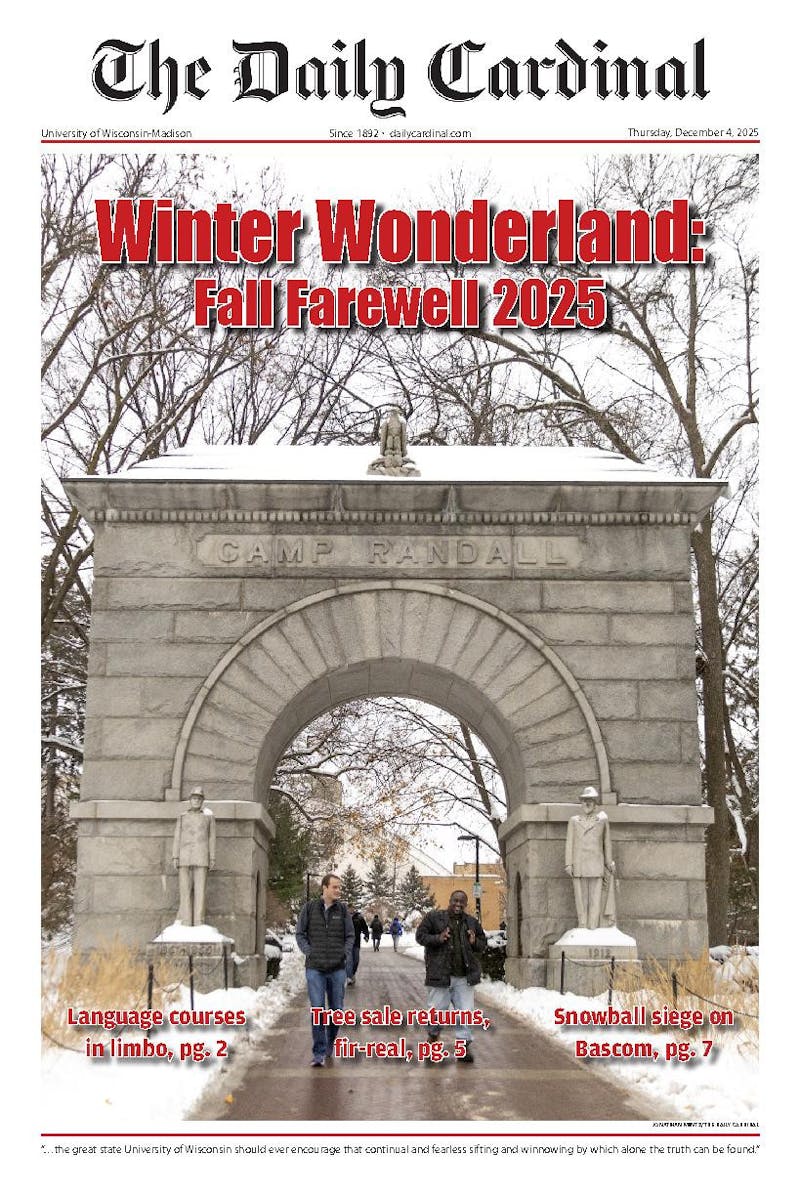Nutritionists recommend sticking to the perimeter of the grocery store in order to buy the most healthy foods. However, with the cost of groceries rising (five bucks for strawberries) and the average college student's budget getting smaller and smaller, the time has come for creative and thrifty trips to the supermarket.
For high-quality, less expensive foods, check out the canned goods and frozen foods section. The words canned goods"" might conjure images of syrupy peaches or vomit-inducing peas. The frozen foods section has suffered from a similarly lackluster image, but it doesn't have to be that way.
Ultimately, there are more exciting and delicious ways to spruce up frozen or canned goods besides trying to make a fruitcake out of a fruit cocktail can at 2 a.m. - especially when it means saving money and time.
It's easy to see that most often - especially when considering out-of-season produce - frozen and canned goods are a more economical buy. Right now, pineapples are hovering around $4 each when purchased in the fresh produce section. However, a trip to the canned fruits aisle can provide a one-pound can of pineapple slices in natural juices for around a dollar. The taste of the fruit is still delicious and it saves time because there is no peeling, coring or cutting. Pair pineapple with chicken and rice, cottage cheese or eat it by itself.
Likewise, fresh peaches are about $2 per pound, but a can of peach or apricot halves is going to run anywhere between $1.25 and $2.25. A fantastic summertime trend is to grill fruit, and these canned options work just as well for less money. Mandarin oranges can be drained and tossed into yogurt or a salad.
Canned vegetables are also in abundance and easy to incorporate into any meal. Green beans, carrots and corn are some of the most common options. They typically work well in casseroles or as a side. Likewise, canned corn - not creamed corn - makes a great base for homemade salsa. Combine it with a can of black beans, lime juice, cilantro and even diced tomatoes for a fresh summery side dish even in the middle of the coldest months.
The savings do not stop with canned foods; they're also hidden in the frozen food aisle. Supermarkets frequently have sales on frozen foods and veggie staples like broccoli, cauliflower, corn and beans. They can be found for about $1.50 for a 12 to 16 ounce bag. These veggies are easy to throw in with Asian-inspired dishes, turn into soups or use as toppings for baked potatoes. Frozen chopped spinach also works amazingly well in a spinach and artichoke dip. Another bonus - frozen vegetables are actually still chock-full of those vitamins that doctors and parents recommend.
Fruit favorites such as strawberries, blueberries, raspberries and cherries are also available for sensible prices. The possibilities for these frozen bits of goodness are endless. It only takes about one-half cup of berries in a blender with some ice and non-fat milk or maybe even some chocolate to make a delicious smoothie for breakfast.
Likewise, frozen fruit pairs great with frozen yogurt or ice cream. Throw them in pancakes, on waffles, in a salad or on a cheesecake. It's difficult to do them wrong. Despite unbelievably reasonable prices, the quality of frozen food is nothing to discount.
Food companies have begun to tailor their products to reflect the changing tastes and busy lifestyles of Americans, and the variety of foods found in this once dreaded section of the supermarket has improved.
Now it's easy to find stir-fry medleys, vegetables with cheese or even entire delicious and healthy meals for affordable prices. Options also include vegetables in bags that can be popped directly into the microwave to steam or individual serving-size containers. The benefits of getting creative with frozen food and canned goods surpass any monetary gain. Since the extent of dorm or apartment cooking is for one or two people, it is difficult to purchase fresh produce in small volumes, leaving leftover wilted lettuce and fuzzy berries that have seen much better days.
Canned goods also have a much longer shelf life than fresh foods, so they are easy to keep around and have on hand for rainy days. Frozen foods, especially when packaged in individual containers, are perfect for those looking to eat healthy without buying in bulk or over-sized quantities.
As cold weather approaches, it becomes increasingly important to get the recommended daily servings of fruits and vegetables. Plus, macaroni and cheese and Hot Pockets get old after awhile. Add some cost-effective and convenient color and quality to any meal by shopping in the canned and frozen foods section at the local supermarket.






